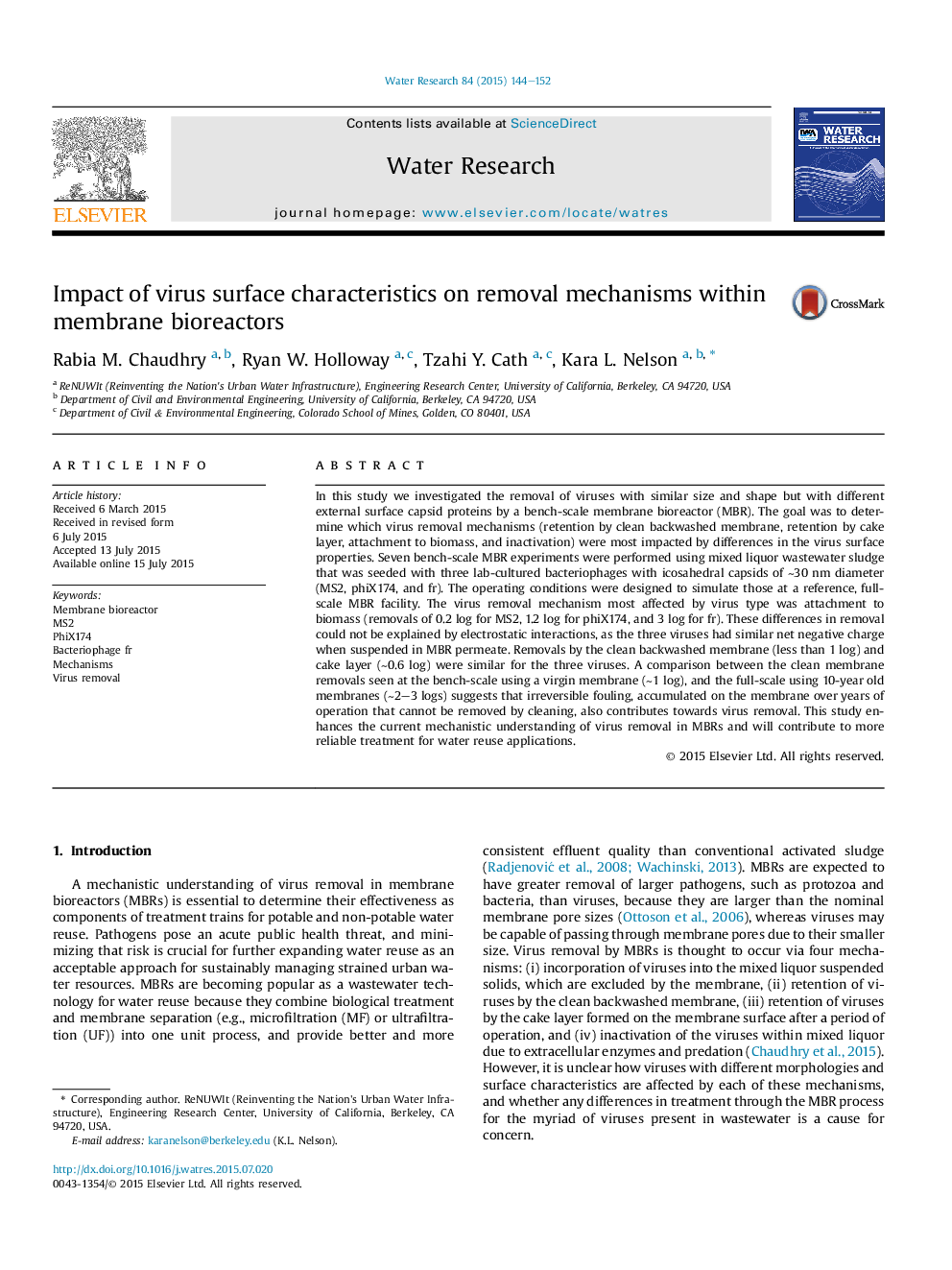| کد مقاله | کد نشریه | سال انتشار | مقاله انگلیسی | نسخه تمام متن |
|---|---|---|---|---|
| 4481082 | 1623084 | 2015 | 9 صفحه PDF | دانلود رایگان |
• We examined virus removal mechanisms most impacted by virus surface properties.
• We used wastewater and three viruses with different surface properties.
• The virus removal mechanism most affected by virus type was attachment to biomass.
• Removals by clean membrane and cake layer were similar for three viruses studied.
• Long-term operation increases virus removal through clean membrane mechanism.
In this study we investigated the removal of viruses with similar size and shape but with different external surface capsid proteins by a bench-scale membrane bioreactor (MBR). The goal was to determine which virus removal mechanisms (retention by clean backwashed membrane, retention by cake layer, attachment to biomass, and inactivation) were most impacted by differences in the virus surface properties. Seven bench-scale MBR experiments were performed using mixed liquor wastewater sludge that was seeded with three lab-cultured bacteriophages with icosahedral capsids of ∼30 nm diameter (MS2, phiX174, and fr). The operating conditions were designed to simulate those at a reference, full-scale MBR facility. The virus removal mechanism most affected by virus type was attachment to biomass (removals of 0.2 log for MS2, 1.2 log for phiX174, and 3 log for fr). These differences in removal could not be explained by electrostatic interactions, as the three viruses had similar net negative charge when suspended in MBR permeate. Removals by the clean backwashed membrane (less than 1 log) and cake layer (∼0.6 log) were similar for the three viruses. A comparison between the clean membrane removals seen at the bench-scale using a virgin membrane (∼1 log), and the full-scale using 10-year old membranes (∼2–3 logs) suggests that irreversible fouling, accumulated on the membrane over years of operation that cannot be removed by cleaning, also contributes towards virus removal. This study enhances the current mechanistic understanding of virus removal in MBRs and will contribute to more reliable treatment for water reuse applications.
Figure optionsDownload high-quality image (230 K)Download as PowerPoint slide
Journal: Water Research - Volume 84, 1 November 2015, Pages 144–152
